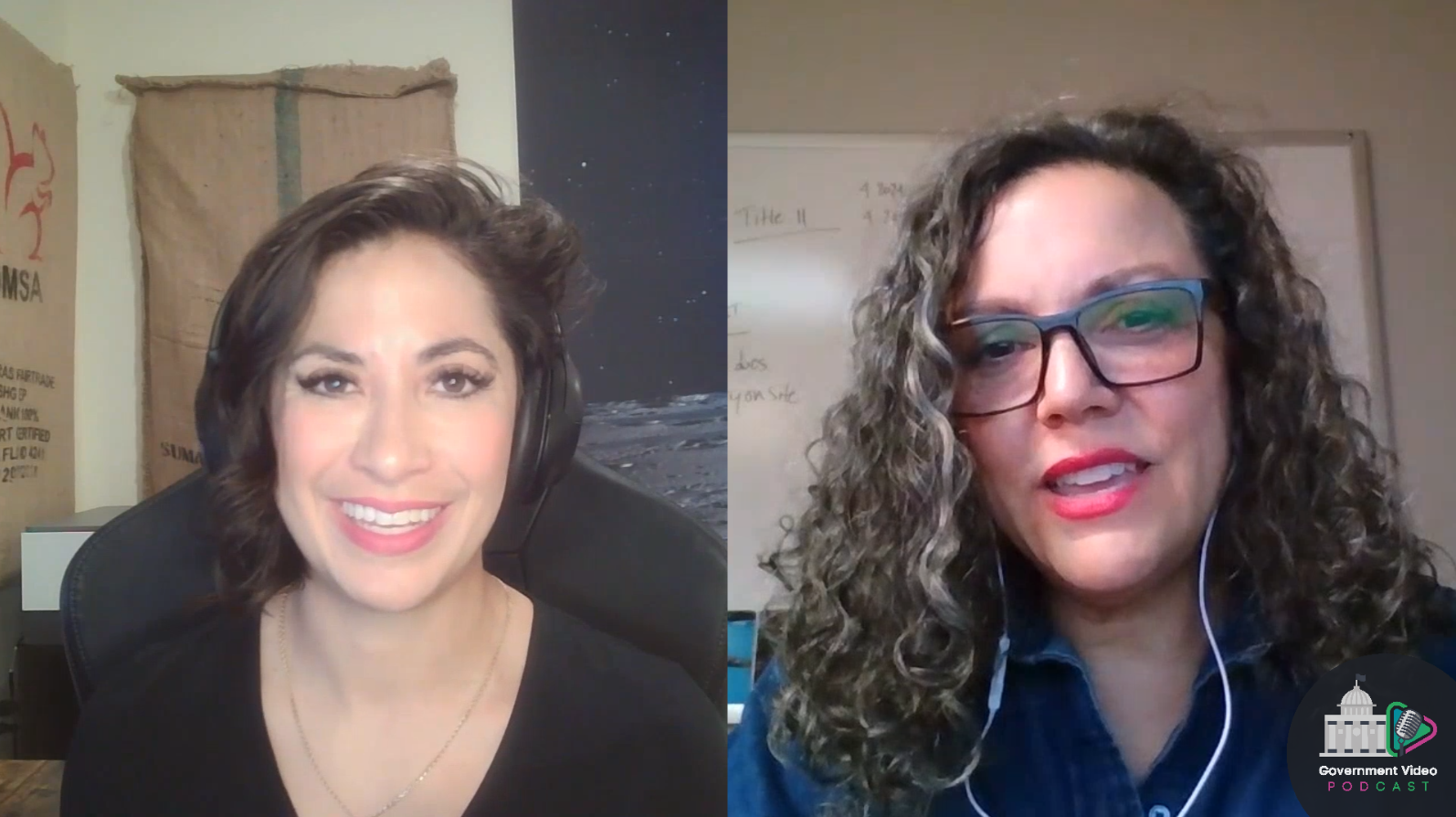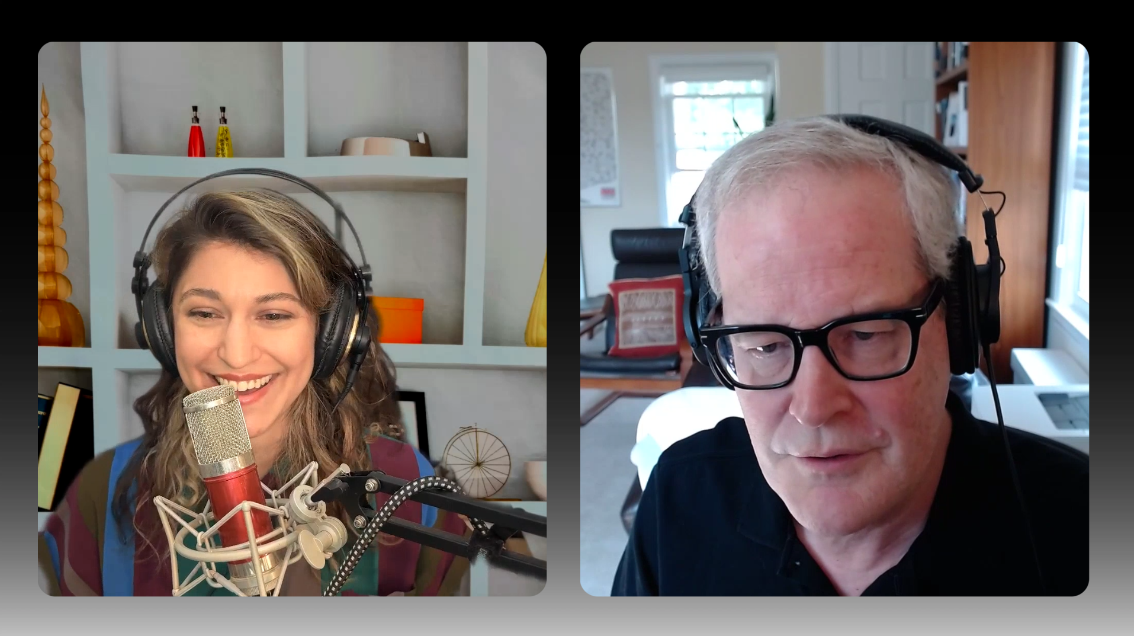
Hey there, GVP listeners, Michelle here. I’ve got a really good episode for you this week. We’re talking about something that should be top of mind for everyone managing government video these days: closed captioning—and more importantly, how to fund it.
Closed captioning isn’t just a nice-to-have anymore—it’s essential for ADA compliance and for serving all of your residents, including those with hearing impairments or language barriers. You’re probably already feeling the pressure, especially if you’ve got the Department of Justice (DOJ) regulations looming over you. But here’s the catch: closed captioning can be expensive, right? Especially if you’re working with a budget that hasn’t changed since, oh, say, 2005 (I’m looking at you, local government budgets). If that sounds familiar, then you’re in the right place.
In this week’s episode, I sat down with Brady Wurtz from Campbell County Media, and let me tell you—his story is one you’re going to want to hear. Campbell County Media covers a whopping 11 cities with a small team and a budget that’s been stretched about as far as it can go. They knew closed captioning was something they needed to offer, but like many of you, they had no idea how they’d be able to pay for it.
So, How Did They Do It?
The secret? Grant funding. That’s right—Brady and his team found a way to fund an entire year of closed captioning services, and they did it through a county-level grant designed to serve aging and mental health populations. I know what you’re thinking: “Wait, how did closed captioning fit into that?” Well, that’s the beauty of it—they were able to demonstrate how closed captioning would benefit hearing-impaired residents and those who prefer to read content rather than listen. And bingo, they had a solid case for the grant!
Brady’s experience is a goldmine of insights for anyone out there trying to expand accessibility on a shoestring budget. Here are just a few of the highlights from our conversation:
Finding the Right Grant
Brady’s team knew they needed external funding if they were going to make closed captioning happen. Enter the county’s mental health and aging population fund. This might not be the first place you’d think to look for media accessibility funding, but Brady and his team made a smart connection: many in the aging population struggle with hearing loss, and providing closed captioning would help them better engage with government content. So they reached out to county officials, gathered the details on the grant, and started the application process.
If you’re thinking, “There’s no way we have a grant like that in our area,” think again. There are likely tons of local, state, and even federal grants out there that can help with projects like this. The key is making the connection between your accessibility project and the broader goals of the grant. Brady’s team didn’t just focus on compliance; they focused on community impact—showing how this service would help vulnerable populations better engage with local government.
Data Is Your Best Friend
One of the things that makes grant writing intimidating is the idea that you need to be some kind of expert. But Brady’s experience shows you don’t need a dedicated grant writer to make this work—you just need data. Lots of it.
For Campbell County Media, that meant pulling programming and audience measurement reports from their broadcast system to figure out exactly how many hours of content they would need to caption. Brady used historical data to estimate how many hours of city council meetings, public forums, and other government programming would require captioning. They even made strategic decisions about which types of content wouldn’t need captions, like local concerts and music events, to keep costs manageable.
In about an hour, they had all the data they needed to justify the funding amount they were requesting. If you have access to program reports or broadcast logs, pulling the data for your own grant proposal could be a lot simpler than you think.
Testing the Waters with Automated Captioning
Now, if you’ve been around long enough, you probably remember the early days of automated captioning. It wasn’t pretty. We all had our frustrations with those first iterations—where it felt like the captions were actively working against you. But here’s the good news: the technology has come a long way.
Before going all-in on grant funding, Brady and his team decided to do a trial run. They paid for a limited number of hours of automated closed captioning to test it out on their government meetings. And guess what? They were pleasantly surprised. The captions were accurate (even eerily so, in some cases), and while there were a few minor hiccups with names and technical terms, they were able to correct those manually.
So, if you’ve been on the fence about automated captioning because of a bad experience in the past, it’s time to reconsider. It’s much more accurate and affordable now, and it might be exactly what your team needs to finally roll out captions on your public content.
How to Write a Winning Grant Proposal
Writing a grant proposal can feel daunting, but Brady’s approach was refreshingly straightforward. Here’s the gist of how they pulled it off:
- Frame the need: Brady’s team didn’t just talk about how they needed to meet federal regulations—they explained how closed captioning would directly benefit the community, especially the aging and hearing-impaired residents.
- Back it up with data: They used those simple program reports to show exactly how many hours of programming needed captioning and how much it would cost. It’s hard for a grant provider to argue with clear, solid numbers.
- Keep it simple: They didn’t overcomplicate the process by bringing in outside consultants. Brady worked closely with his executive director, and together, they put together a strong, concise proposal. If your station has a small staff, don’t let that stop you—sometimes the best proposals come from people who know the community and the needs best.
Why You Should Listen
So, why am I telling you all this? Because if Campbell County Media can do it, you can too. If you’re struggling to implement closed captioning or any other accessibility initiative because of budget constraints, grants could be the answer you’ve been looking for. Brady’s story is packed with actionable advice that will help you navigate the grant process, from finding the right opportunity to pulling data and making your case.
And trust me, we didn’t even cover everything in this post—there’s a lot more to dive into on the full episode, so make sure you tune in! 🎙️ Whether you’re new to grant writing or just looking for fresh ideas, this episode is full of real-world tips that can help your station make accessibility happen, no matter the budget.
And hey, don’t forget to like, subscribe, and share the podcast if you found this helpful. Let’s keep making government media more accessible together!
Event Replay - Demystifying Closed Captioning: What WCAG 2.1AA Really Requires for Government Video
Get clarity on WCAG 2.1AA captioning requirements. Learn what’s required, what’s recommended, and how to keep your government video content compliant.
.png)








.png)





